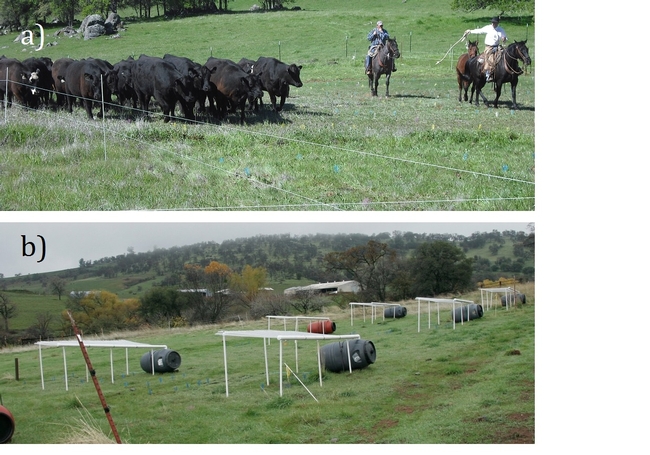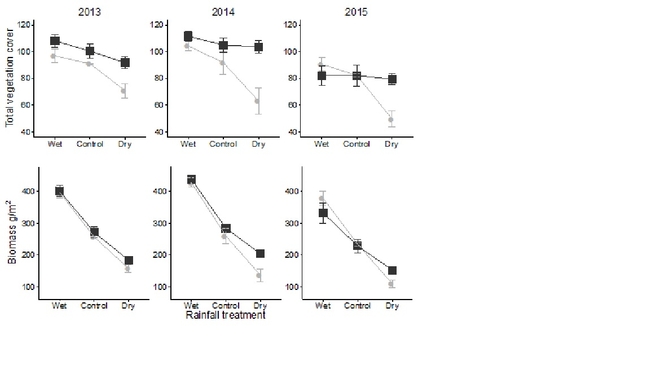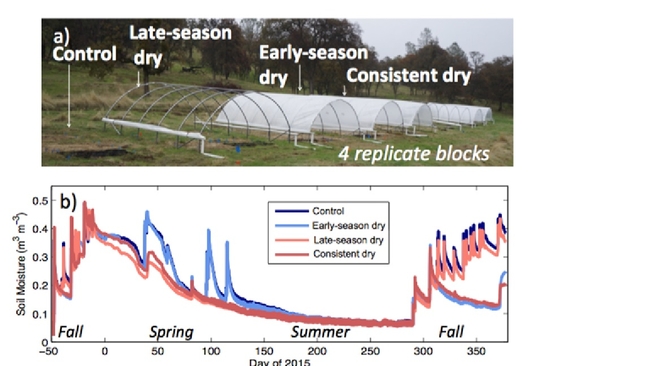Over the last few years Californians have grappled with how to manage lands during times of both drought and plentiful rainfall. At SFREC and on Central Valley rangelands, one question is whether management that promotes high forage in wet years alters ecosystem resilience in dry years. For example, promoting highly productive grasses is a common goal. While drought years can negatively affect productive grasses, less productive species, particularly forbs like filaree, do relatively well in drought years due to decreased competition. Over the last several years the Suding lab and SFREC crew have been building ever-larger drought manipulations to test how different management practices, and associated species mixes, affect forage across good and bad rainfall years.
In the first iteration of this project, we looked at how grazing practices and rainfall interact to affect forage over dry and wet years. We hypothesized that grazing practices that maintained a diverse mix of grasses and forbs would promote more stable forage across wet and dry conditions. To test this, we first varied grazing intensity over four years within a pasture to describe how grazing alters grass and forb abundances (Figure 1a). Second, we implemented rainout shelters and irrigation over three years to create “dry” and “wet” plots within areas of different grazing histories (Figure 1b). We found that moderate grazing practices maintained a diverse mix of grass and forb species. This mixture better maintained vegetation cover and biomass across rainfall conditions compared to low-grazed areas dominated only by grasses (Figure 2) (Hallett, Stein, Suding conditionally accepted, Oecologia).
In the second iteration of this project, we are exploring how rainfall timing alters grassland diversity and forage production. We hypothesized that early-season drought will alter which species recruit that year, with higher forb abundance in dry falls and higher grass abundance in wet years, whereas late-season drought would reduce overall production. To test this, we have implemented large shelters with roofs that are pulled in place to create early-season, late-season and continuous drought as well as a control (Figure 3). We are finding that periodic early-season drought helps to maintain forb diversity in California rangelands. Working with Dr. Whendee Silver, we are also testing the effect of rainfall timing on nutrient cycling and greenhouse gas emissions. We are finding that previous-season rainfall as well as current season alters greenhouse gas emissions, which may be important for managing rangelands for multiple ecosystem services going into the future.


